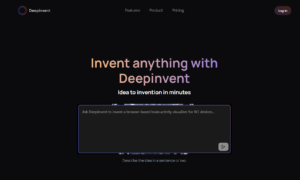Introduction:
In the ever-evolving landscape of technology, one domain that has witnessed remarkable strides is Natural Language Processing (NLP). This cutting-edge field harnesses the power of artificial intelligence (AI) to decipher and comprehend human language, unlocking unprecedented possibilities in various industries. From virtual assistants and chatbots to sentiment analysis and language translation, NLP is reshaping the way we interact with machines. This article explores the intricacies of Natural Language Processing, its applications, and the transformative impact it has on our digital world.
Understanding Natural Language Processing:
Natural Language Processing, a subfield of AI, focuses on the interaction between computers and human language. It involves the development of algorithms and models that enable machines to understand, interpret, and respond to human language in a way that is both meaningful and contextually relevant. The primary goal of NLP is to bridge the gap between human communication and machine comprehension, paving the way for seamless interaction and enhanced user experiences.
Key Components of NLP:
Tokenization:
At the core of NLP is tokenization, the process of breaking down a text into smaller units called tokens. These tokens can be words, phrases, or even characters, providing a foundation for further analysis.
Part-of-Speech Tagging:
This component involves assigning grammatical categories, such as nouns, verbs, and adjectives, to each token. Part-of-speech tagging is crucial for understanding the syntactic structure of a sentence.
Named Entity Recognition (NER):
NER identifies and classifies entities within a text, such as names of people, locations, organizations, and more. This helps in extracting valuable information from unstructured data.
Syntax and Semantics Analysis:
NLP algorithms delve into the syntax and semantics of a language, allowing machines to understand the relationships between words, the structure of sentences, and the overall meaning of a text.
Applications of Natural Language Processing:
Virtual Assistants:
Voice-activated virtual assistants like Siri, Google Assistant, and Alexa leverage NLP to comprehend and respond to user commands. The ability to understand natural language makes these assistants more intuitive and user-friendly.
Chatbots:
Businesses use chatbots equipped with NLP capabilities to engage with customers on websites and messaging platforms. These chatbots can understand user queries, provide relevant information, and offer assistance in real-time.
Sentiment Analysis:
NLP plays a pivotal role in sentiment analysis by analyzing text data to determine the sentiment expressed, whether it’s positive, negative, or neutral. This is valuable for businesses to gauge customer opinions and tailor their strategies accordingly.
Language Translation:
NLP algorithms are employed in language translation services, enabling machines to translate text from one language to another while preserving context and meaning.
Text Summarization:
NLP aids in summarizing large volumes of text by extracting key information and condensing it into concise summaries. This is particularly useful in information retrieval and content analysis.
The Transformative Impact of NLP:
Enhanced User Experience:
By enabling machines to understand and respond to natural language, NLP enhances user experiences across various applications. Users can interact with technology in a more conversational and intuitive manner.
Increased Efficiency:
In business settings, NLP-powered tools streamline processes and enhance efficiency. Automated responses, quick data analysis, and language understanding contribute to faster decision-making.
Insights from Unstructured Data:
NLP allows businesses to extract valuable insights from unstructured data sources such as social media, customer reviews, and documents. This information can inform strategic decisions and improve overall performance.
Cross-Language Communication:
Language barriers are significantly reduced with NLP-driven language translation services. This facilitates cross-language communication, fostering collaboration and understanding on a global scale.
Personalization in Marketing:
Marketers leverage NLP to analyze customer behavior, preferences, and feedback. This information is then used to create personalized marketing campaigns that resonate with individual consumers.
Conclusion:
Natural Language Processing stands at the forefront of technological innovation, revolutionizing the way we communicate with machines. As NLP continues to evolve, its applications will undoubtedly extend into new frontiers, impacting industries ranging from healthcare and finance to education and entertainment. By unleashing the power of AI in language understanding, NLP is not just transforming the digital landscape; it is reshaping the very fabric of human-machine interaction. Embracing the potential of NLP opens doors to a future where technology seamlessly integrates with our natural way of communicating, making our digital experiences more intuitive, efficient, and enriching.



































